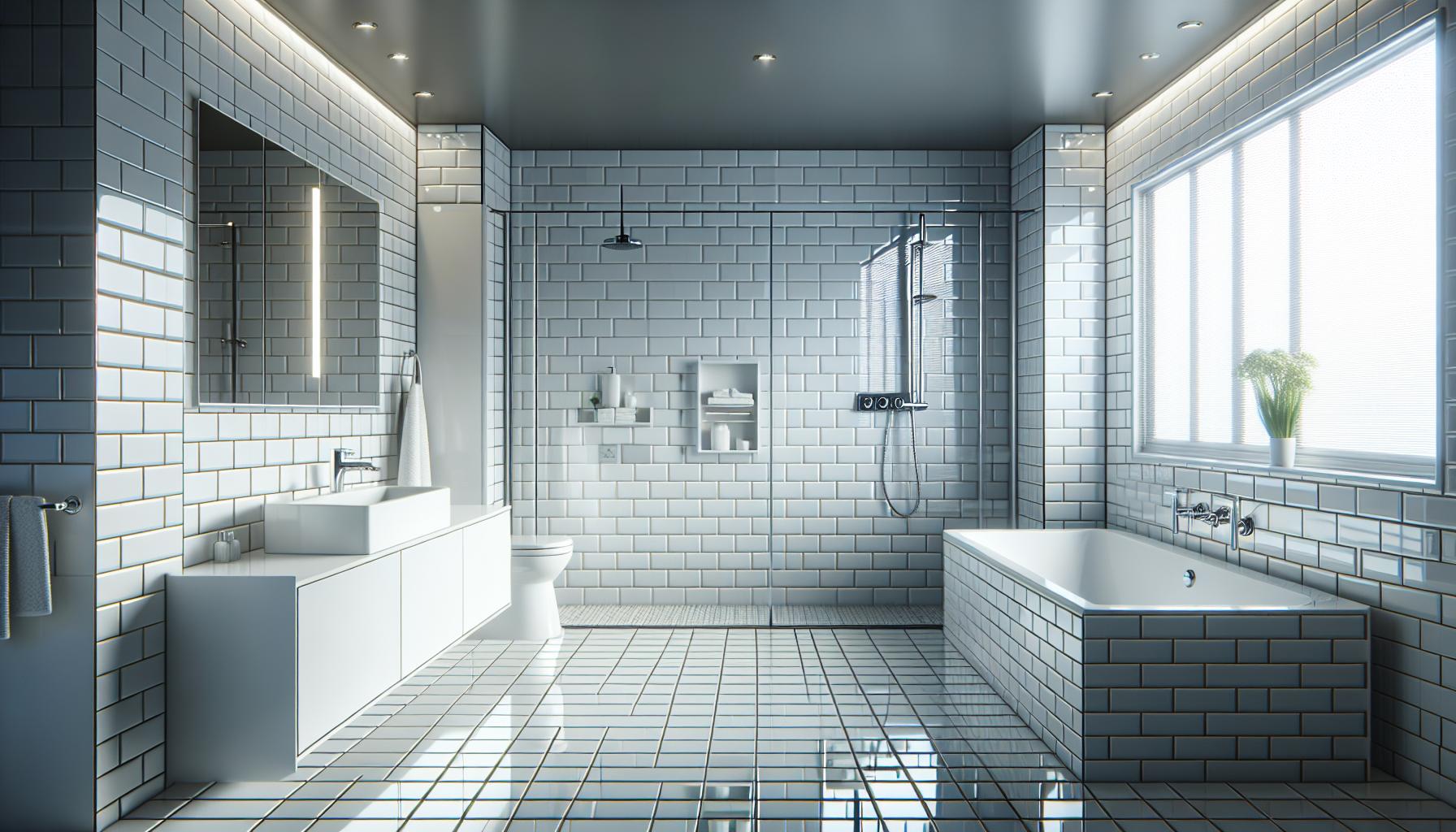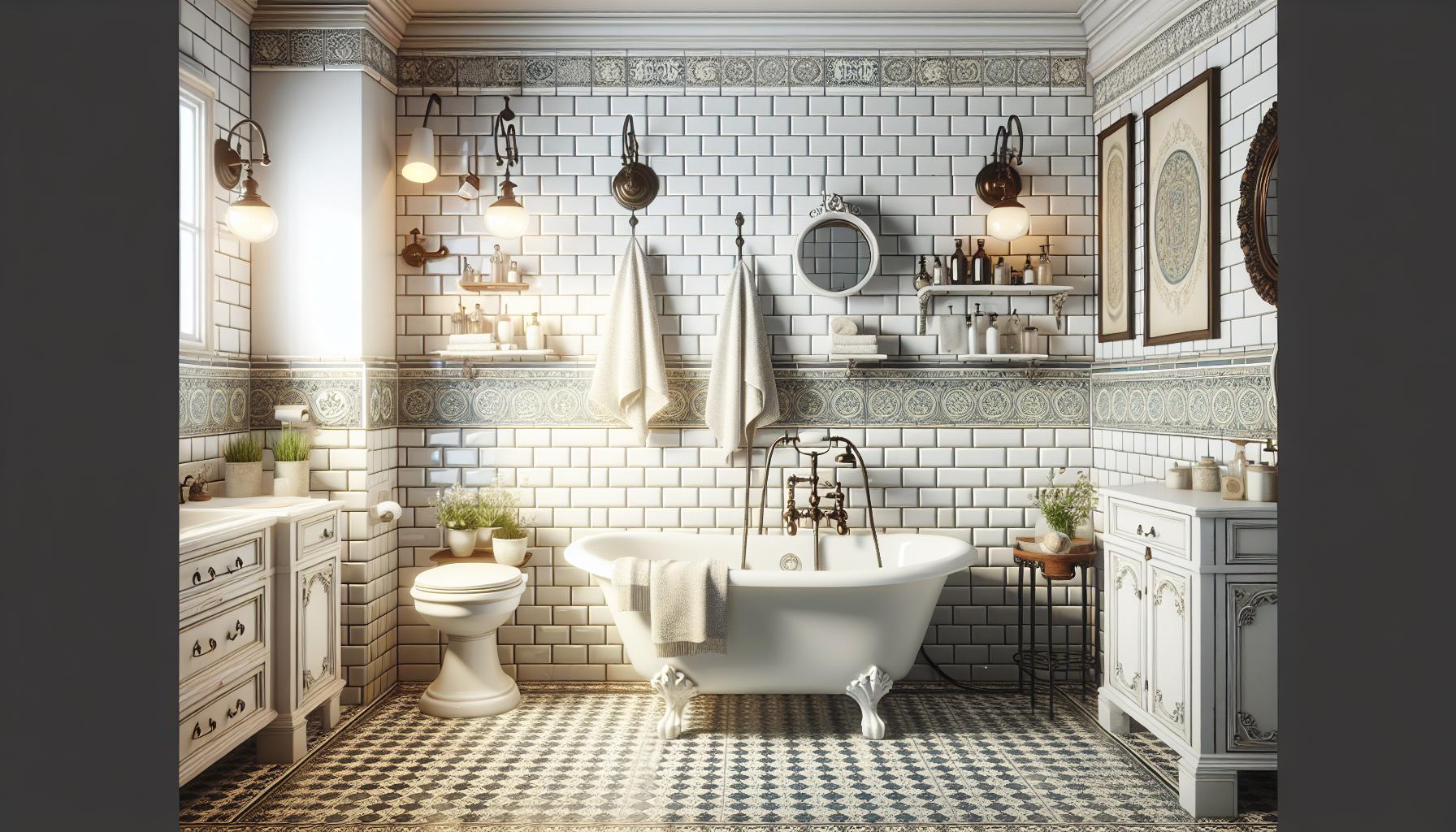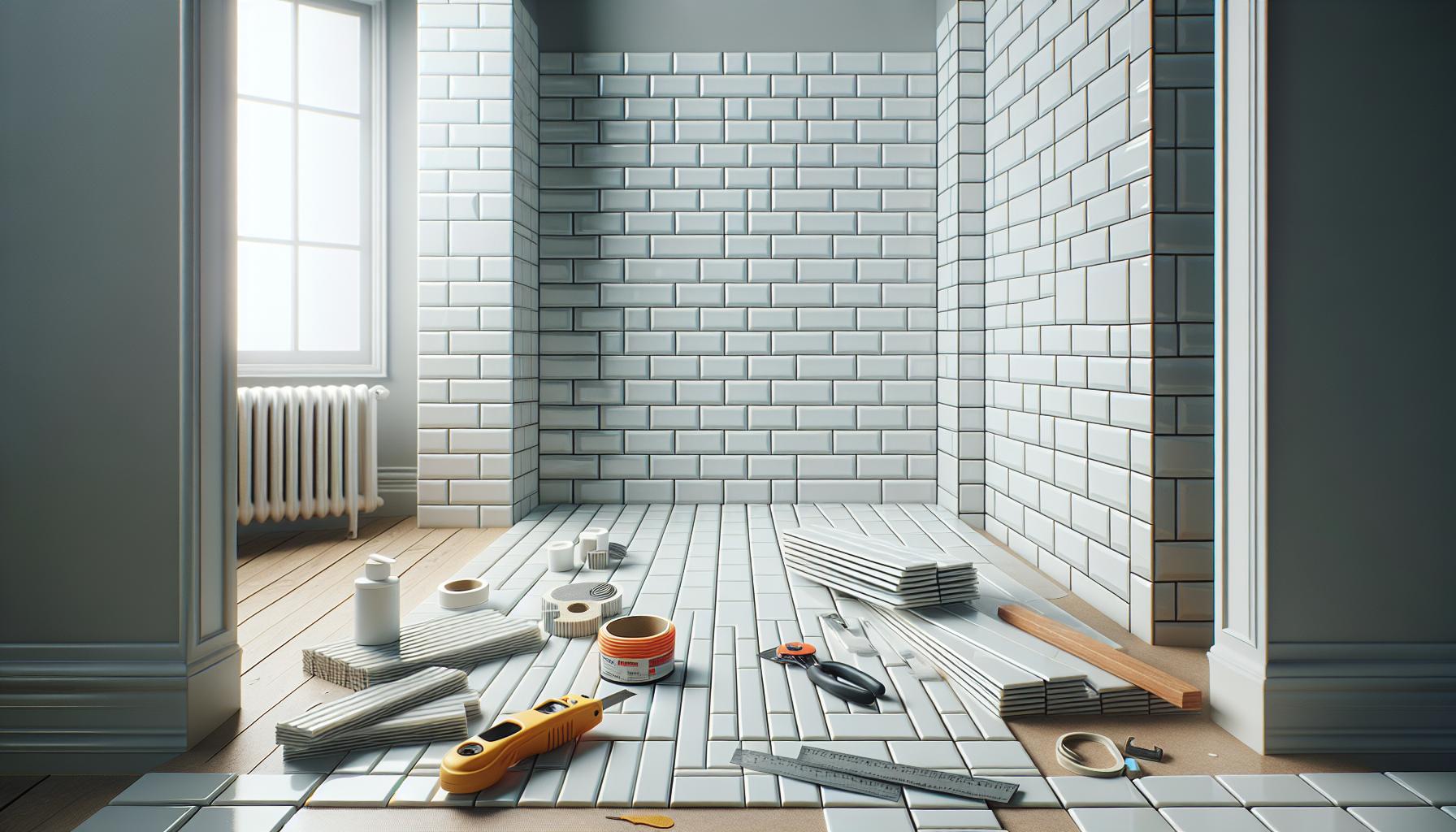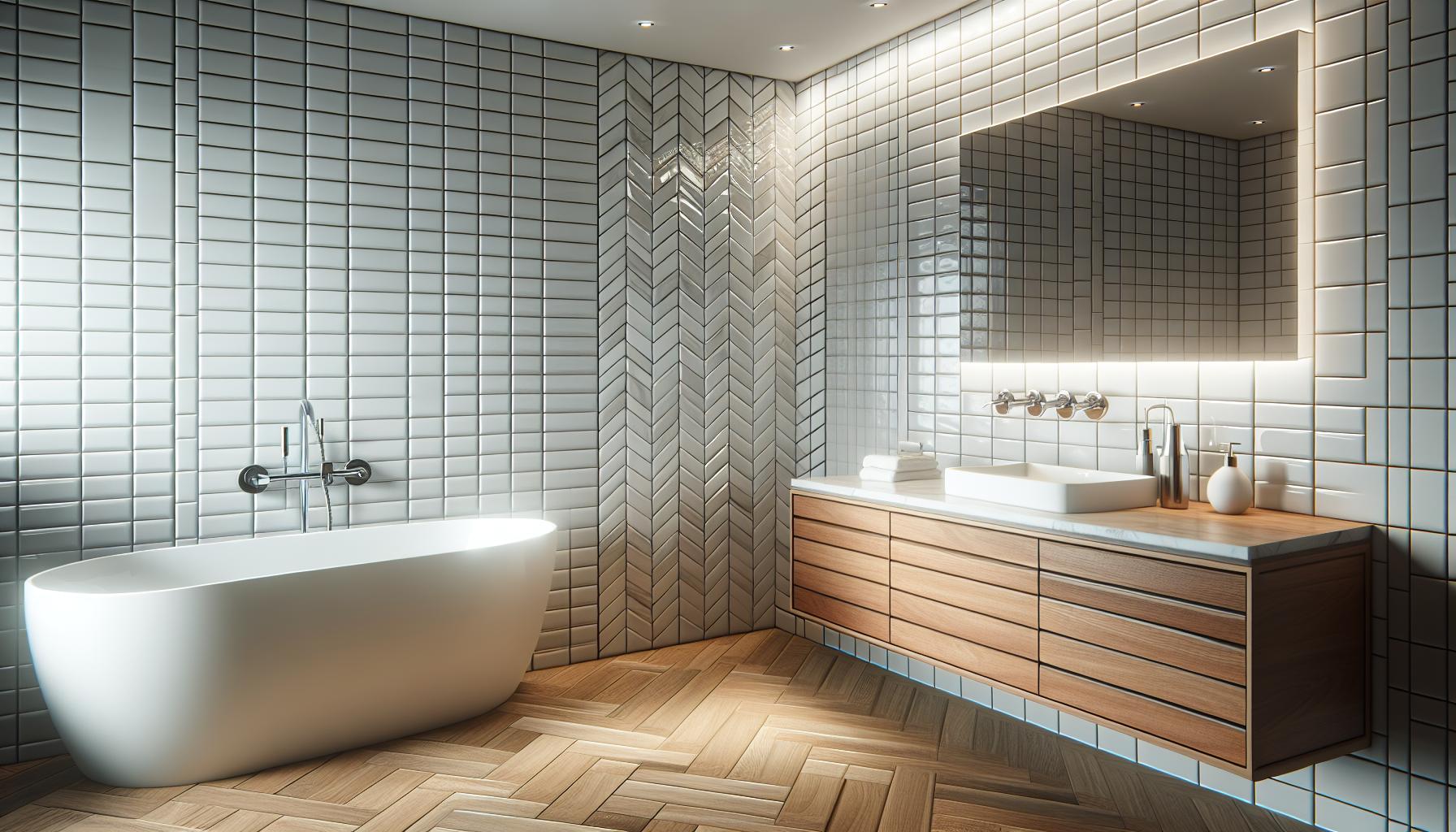Subway tile bathrooms have become a staple in modern home design, and it’s easy to see why. With their clean lines and timeless appeal, these tiles can transform any space into a stylish retreat. Whether you’re updating a small powder room or creating a luxurious master bath, subway tiles offer endless possibilities for creativity and elegance.
Key Takeaways
- Timeless Appeal: Subway tiles offer a classic design that suits a variety of bathroom styles, from traditional to modern, enhancing the aesthetic of any space.
- Durability: Made from ceramic or porcelain, subway tiles are resistant to chipping, cracking, and moisture, making them ideal for high-traffic and wet areas.
- Low Maintenance: Their smooth surfaces are easy to clean and resist stains, promoting a healthier bathroom environment with minimal upkeep.
- Design Versatility: These tiles can be arranged in numerous patterns and colors, allowing for creative expression and adaptation to any design theme.
- Installation Options: Homeowners can choose between DIY installation or hiring professionals, depending on the project complexity and personal skill level.
- Cost Considerations: Pricing varies significantly based on material choice and installation complexity; budgeting for additional materials is essential for a successful project.
Overview of Subway Tile Bathrooms
Subway tile bathrooms feature rectangular tiles typically measuring 3×6 inches, renowned for their sleek and classic appearance. Installing these tiles creates a visually appealing backdrop that suits diverse bathroom styles. Whether opting for traditional white gloss or experimenting with color and texture, subway tiles offer versatility in design.
I appreciate the easy maintenance of subway tiles, which often resist stains and moisture. The grout lines allow for a variety of patterns, including herringbone or stacked layouts, adding depth and personality to the space. Their elegant finish can seamlessly complement various fixtures, from vintage faucets to modern vanities.
Subway tiles enhance both small and large bathrooms, maximizing light and space. Reflections off their smooth surfaces create an open, airy atmosphere, making them ideal for compact areas. By installing subway tiles vertically, I can further elongate the walls, creating a visually taller space.
Incorporating subway tiles with complementary elements, such as wood accents or metallic fixtures, can elevate a bathroom’s aesthetic. Mixing materials not only adds dimension but also enhances the overall design theme. The timeless nature of subway tiles ensures they remain stylish and relevant across design trends.
Benefits of Subway Tile

Subway tiles offer numerous advantages for bathrooms, making them a popular choice in home design. Their inherent qualities contribute to overall aesthetics and functionality.
Durability and Longevity
Subway tiles withstand wear and tear, ensuring they remain intact over time. Their ceramic or porcelain materials resist chipping and cracking, making them suitable for high-traffic areas. Subway tiles also handle moisture well, significantly reducing issues like mold and mildew. This resilience ensures that my bathroom retains its look and feel for years, adding value to my home.
Easy Maintenance
Subway tiles require minimal upkeep, which simplifies my cleaning routine. Their smooth surfaces resist stains, and I find that wiping them down with a damp cloth keeps them looking fresh. Grout lines can be sealed to prevent discoloration, making them easier to maintain. With their moisture-resistant properties, subway tiles don’t harbor bacteria, promoting a healthier environment in my bathroom.
Design Versatility

Subway tiles offer incredible design versatility, making them suitable for various styles and aesthetics. Their classic appearance adapts seamlessly to both traditional and modern settings.
Traditional Styles
Traditional designs thrive with subway tiles due to their classic elegance. Common configurations include horizontal laying patterns with contrasting grout lines, creating a timeless look. White subway tiles, often paired with darker accents, evoke a vintage charm in spaces like Victorian or farmhouse-style bathrooms. Furthermore, adding decorative borders or using tiles in unique color palettes can enhance the traditional appeal. Complementary elements, such as clawfoot tubs or antique fixtures, elevate the overall ambiance, providing a cohesive and sophisticated feel.
Modern and Contemporary Looks
Modern and contemporary designs also benefit from subway tiles, thanks to their sleek lines and minimalist aesthetic. I often use larger rectangular tiles or opt for unconventional layouts, like herringbone or vertical stacking, to add a dynamic element. Playing with color, such as bold hues or matte finishes, can create striking contrasts against modern fixtures. Incorporating complementary materials, like concrete or metal, reinforces the contemporary style and results in an upscale, urban vibe. This adaptability ensures subway tiles remain relevant, regardless of shifting design trends.
Installation Tips

Installing subway tile in a bathroom requires careful preparation and execution. Proper planning ensures efficient use of materials and a finished product that meets design expectations.
Preparation and Planning
Preparation involves selecting the right materials and tools. I recommend measuring the area accurately to determine the number of tiles needed, accounting for cuts and waste. Grout size affects spacing; using spacers helps maintain even gaps between tiles. I also suggest reviewing installation guides or watching instructional videos for an overview of the process. Gathering tools like a tile cutter, adhesive, and grout ensures a smooth workflow.
DIY vs. Professional Installation
Choosing between DIY and professional installation depends on personal skill levels and project complexity. For simple layouts, DIY might be feasible, allowing for creative expression and cost savings. However, if the design includes intricate patterns or requires advanced skills, hiring a professional could ensure a high-quality finish. Weighing time constraints and available expertise helps determine the best approach for subway tile installation.
Pricing and Cost Considerations
Subway tile pricing varies based on material, size, and brand. The cost of standard ceramic subway tiles typically ranges from $1 to $6 per square foot, while porcelain options may range from $3 to $15 per square foot. Specialty tiles, like handmade or designer varieties, can exceed $20 per square foot.
Installation costs contribute significantly to the overall project expense. Hiring a professional installer usually adds $5 to $10 per square foot, depending on the complexity of the layout. Simple patterns may permit a DIY approach, reducing total costs, while intricate designs may experience higher labor charges.
When budgeting for a subway tile bathroom, consider additional materials. Grout, adhesive, and backer board, typically adding $1 to $3 per square foot, are essential components. Allocating funds for these materials ensures a comprehensive understanding of overall project costs.
Design choices also impact the price. Specific layouts, like herringbone or stacked patterns, may require additional tiles due to cutting waste, subsequently increasing expenses. Selecting premium finishes or specialized grout can lead to additional costs.
I recommend obtaining multiple quotes from suppliers and installers. Comparing prices helps identify budget-friendly options while maintaining quality. Exploring local tile shops may uncover sales or discounts, offering opportunities for significant savings.
Overall, effective budgeting for subway tile bathrooms involves careful consideration of materials, installation, and design choices to ensure lasting value and satisfaction.
Conclusion
Subway tile bathrooms offer a blend of style and practicality that’s hard to beat. Their timeless appeal and versatility make them a perfect choice for any bathroom, whether you’re aiming for a classic or modern look. I love how these tiles not only enhance the aesthetic but also provide durability and easy maintenance.
When I think about redesigning a bathroom, subway tiles always come to mind as a reliable option. They create a bright and open atmosphere while standing up to the test of time. By incorporating complementary elements, you can truly elevate the space.
If you’re considering a bathroom update, subway tiles might just be the perfect solution to achieve a stunning and functional design.





